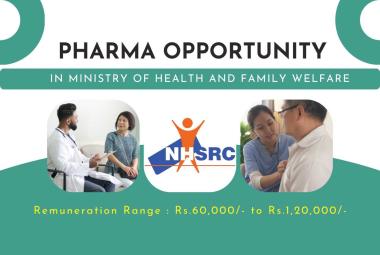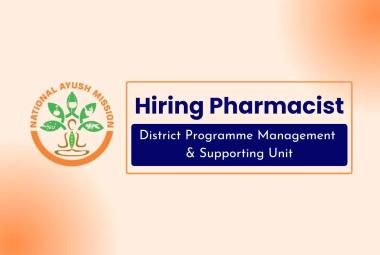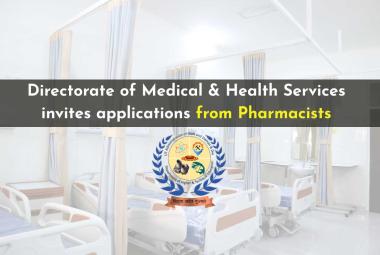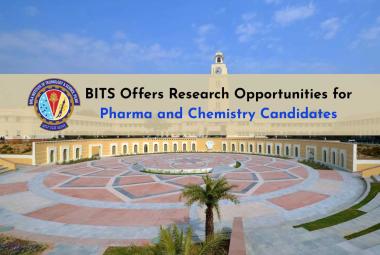{ DOWNLOAD AS PDF }
 ABOUT AUHTOR
ABOUT AUHTOR
Pranav Nayak B*
Srinivas college of pharmacy,
Mangalore, Karnataka India,
*nayak.pranav10@gmail.com
ABSTRACT:
Cinnamon is used as a spice in our day to day life. It is aromatic. It is principally employed in cookery as a condiment and flavoring agent. It has been acquainted as one of the healthiest spices and has medicinal activity. When it is checked for chemical constituents it reveals phenolic flavonoid and carotenoid contents. They contain rich amount of polyphenols which are powerful antioxidants. It inhibits the growth of certain bacteria and fungi. It helps to reduce the blood glucose by increasing insulin in the body by the mechanism of resisting insulin depletion. It interferes with carbohydrate digesting enzyme and reduces degradation of carbohydrate as a result of which it decreases entry of glucose from intestine to blood stream. It reduces the growth of cancer cells. ‘N’ number of pharmacological investigationsconfirmed that the ability of this plant is to exhibit hepatoprotective, neuroprotective and cardioprotective action. This present article will provide you with detailed information on the most of the aspects of cinnamon.
[adsense:336x280:8701650588]
REFERENCE ID: PHARMATUTOR-ART-2485
|
PharmaTutor (Print-ISSN: 2394 - 6679; e-ISSN: 2347 - 7881) Volume 5, Issue 4 Received On: 18/12/2016; Accepted On: 10/01/2017; Published On: 01/04/2017 How to cite this article: Nayak P;Cinnamon: A Magical Drug; PharmaTutor; 2017; 5(4);38-41 |
INTRODUCTION:
The botanical name of cinnamon is cinnamomum zeylanicum and the source is dried bark stem. It belongs to the family Lauraceae. It contains not less than 1% v/w volatile oil. It is commonly called as cinnamon, in French-cannelier, German-Zimtbaum, Italian-canella, portugese-caneleira, Spanish-canelo, India-Dalchini or karuvappadai in Tamilnadu. It is also known as Ceylon cinnamon or true cinnamon. It is exclusively available in cultivated plants. Since cinnamon is a dried stem bark the upper surface is blackish brown in colour and lower surface is reddish brown in colour. It is aromatic sweet in odour and taste. Shape is channeled or compound quills. Its length is upto 40cm. It is slightly fibrous in the inner part. The main constituent of volatile oil is cinnamic aldehyde(75-90%).
Chemical composition:
|
Part of the plant compound |
Chemical constituents of different parts of cinnamon |
|---|---|
|
Leaves |
Cinnamaldehyde: 1.00 to 5.00% Eugenol: 70.00 to 95.00% Bark Cinnamaldehyde: 65.00 to 80.00% Eugenol: 5.00 to 10.00% Root bark Camphor: 60.00%
|
|
Buds |
Terpene hydrocarbons: 78.00% alpha-Bergamotene: 27.38% alpha-Copaene: 23.05% Oxygenated terpenoids: 9.00% C. zeylanicum
|
|
Flowers |
(E)-Cinnamyl acetate: 41.98% trans-alpha-Bergamotene: 7.97% Caryophyllene oxide: 7.20% |
|
Fruits |
trans-Cinnamyl acetate (42.00 to 54.00%) and caryophyllene (9.00 to 14.00%) C. zeylanicum
|
Other compounds which are present in lesser percentages those are cinnamic acid, Hydroxyl cinnamaldehyde, Cinnamyl alcohol, Coumarin, Borneol etc.

Antimicrobial activity:
Various articles have reported the antimicrobial activity of cinnamon in their earlier studies. The combination of cinnamon and clove oil is effective against wide range of organisms. The organisms which are effected are Gram negative bacteria (E.Coli, Pseudomonas aeruginosa, Yersinia enterolitica, Salmonella choleraesuis) and Gram positive organisms (Enterococcus facelis, Listeria monocytogenes, Bacillus cereus, staphylococcus aureas). These works were done by Goni et al.
20 Bacteria and 4 candida sps were destroyed by the antimicrobial activity of cinnamon which is obtained from bark. This activity has also found use against oral microorganisms. Recently Parthasarathy and Thombare reported that the aqueous extract of cinnamon, Azadirachtaindica and syzigiumaromaticum have activity against oral microorganisms. But the oil obtained from it has more antimicrobial activity than S.aromaticum and A.indica. Various other scientists experimented for the antimicrobial activity and all indicated to the point that cinnamon oil is effective against both Gram positive and Gram negative microorganisms.
Antidiabetic activity: “Insulin-potentiating factor was the word coined for the compound which was obtained from cinnamon bark. Some of the scientists concluded that other species of cinnamon have insulin potentiating factor 20 times lesser than that of C.Zeylanicum. Anderson et al isolated and characterized the polyphenol type-A polymers which acts like insulin which helps in the antidiabetic action of cinnamon.

Since cinnamon possess alpha glucosidase inhibiting property, it shows decrease in postprandial hyperglycemia in rats which is induced by streptozotocin. It shows reversible and competitive inhibition. It helps to reduce serum glycosylated Hemoglobin (HbA1C) in type 2 diabetes mellitus with the value over 7. Cinnamon intake daily would decrease fasting blood glucose level.
To check whether cinnamon helps in reducing blood glucose level Lu et al. examined a total of 66 patients with type-2 diabetes mellitus and were divided into 3 groups: place bow, low dose and high dose of cinnamon extract. The patients were also given with Gliclazide. Patients receiving both the doses showed less fasting blood glucose level than the patients receiving placebo.
NOW YOU CAN ALSO PUBLISH YOUR ARTICLE ONLINE.
SUBMIT YOUR ARTICLE/PROJECT AT editor-in-chief@pharmatutor.org
Subscribe to Pharmatutor Alerts by Email
FIND OUT MORE ARTICLES AT OUR DATABASE
Cardioprotective activity:
Cinnamon is obtained from the leaves and has the hypotensive effects. Cinnamophyllin is obtained from Cinnamomum philippinensis and is a potent TXA2 receptor antagonist. In TXA2 disorders such as platelet aggregation this can be useful. Amin et al identified the activity of cinnamon and atorvastatin Hepatic enzyme activity, antioxidant capacity, nitric oxide etc. NO values and antioxidant activity where found to be increased in rats which were treated with cinnamon and atorvastatin than untreated. Later cinnamaldehyde and cinnamic acid were isolated from cinnamom cassia. Thus this provides the evidence for the cardioprotective action of cinnamon.
Anticancer activity:
Cinnamaldehyde was synthesized and was tested for inhibition against angiogenesis. When cinnamaldehyde was made to react with ethanolic extract of C.cassia it stimulates Nrf2 levels. Pretreatment also stimulates the cellular GSH levels and protects HCT116 cells against genetoxicity induced by hydrogen peroxide. When combined all the things together cinnamaldehyde is a powerful activator of Nrf2 and may show an unappreciated anticarcinogenic activity. The site of target for anticancer activity of extract of cinnamon is the vascular endothelial growth factor (VEGF).It is one of the potent natural inhibitor of Nitrogen-activated protein kinase and stat3 mediated signaling pathway. This helps in the prevention and treatment of cancer. Varalaxmi et al showed that apoptosis was increased on treating with methanolic extract in the human hepatoma cancer cells.
CONCLUSION:
The various properties, uses, characters of cinnamon were came across in this study of the article. These research and advancements must be reported and must be documented for the future generations for their well being.
REFERENCES:
1.Park EJ, Pezzutto JM. Botanicals in cancer chemoprevention. Cancer and Metastasis Reviews. 2002;21:231-255.
2.Senanayake UM, Lee TH, Wills RBH. Volatile constituents of cinnamon (Cinnamomum zeylanicum) oils. Journal of Agricultural and Food Chemistry. 1978;26(4):822-824.
3.Singh G, Maurya S, de Lampasona MP, Catalan CAN. A comparison of chemical, antioxidant and antimicrobial studies of cinnamon leaf and bark volatile oils, oleoresins and their constituents. Food and Chemical Toxicology. 2007;45(9):1650-1661.
4.Tung YT, Yen PL, Lin CY, Chang ST. Antiinflammatory activities of essential oils and their constituents from different provenances of indigenous cinnamon (Cinnamomum osmophloeum) leaves. Pharmaceutical Biology. 2010;48(10):1130-1136.
5.Unlu M, Ergene E, Unlu GV, Zeytinoglu HS, Vural N. Composition, antimicrobial activity and in vitro cytotoxicity of essential oil from Cinnamomum zeylanicumBlume (Lauraceae). Food ChemToxicol. 2010;48(11):3274-3280.
6.Cao H, Polansky MM, Anderson RA. Cinnamon extract and polyphenols affect the expression of tristetraprolin, insulin receptor, and glucose transporter 4 in mouse 3T3L1 adipocytes. Archives of Biochemistry and Biophysics. 2007;459(2):214-222.
7.Li HB, Wong CC, Cheng KW, Chen F. Antioxidant properties in vitro and total phenolic contents in methanol extracts from medicinal plants. LWTFood Science and Technology. 2008;41(3):385-390.
8.Yang CH, Li RX, Chuang LY. Antioxidant activity of various parts of Cinnamomum cassia extracted with different extraction methods. Molecules. 2012;17(6):7294-7304.
9.Hili P, Evans CS, Veness RG. Antimicrobial action of essential oils: the effect of dimethylsulphoxide on the activity of cinnamon oil. Letters in Applied Microbiology. 1997;24(4):269-275.
10.Prabuseenivasan S, Jayakumar M, Ignacimuthu S. In vitro antibacterial activity of some plant essential oils. BMC Complementary and Alternative Medicine. 2006;6: 39.
11.Matan N, Rimkeeree H, Mawson AJ, Chompreeda P, Haruthaithanasan V, Parker M. Antimicrobial activity of cinnamon and clove oils under modified atmosphere conditions. International Journal of Food Microbiology. 2006;107(2):180-185.
12.Gende L, Floris I, Fritz R, Eguaras MJ. Antimicrobial activity of cinnamon (Cinnamomum zeylanicum) essential oil and its main components against paenibacillus larvae from argentine. Bulletin of Insectology. 2008;61(1):1-4.
13.Goni P, L´opez P, S´anchez C, G´omezLus R, Becerril R, Ner´ın C. Antimicrobial activity in the vapour phase of a combination of cinnamon and clove essential oils. Food Chemistry. 2009;116(4):982-989.
14.Parthasarathy H, Thombare S. Evaluation of antimicrobial activity of Azadirachtaindica, Syzygiumaromaticum and Cinnamomum zeyalnicum against oral microflora. Asian Journal of Experimental Sciences. 2013;27(2):13-16.
15.Varalakshmi B, Vijaya AA, Karpagam T, SugunaBai J, Manikandan R. In vitro antimicrobial and anticancer activity of Cinnamomum zeylanicum Linn bark extracts. Int J Pharm Pharm Sci. 2013;6(1):12-18.
16.Khan A, Bryden NA, Polansky MM, Anderson RA. Insulin potentiating factor and chromium content of selected foods and spices. Biological Trace Element Research. 1990;24(3):183-188.
17.Broadhurst CL, Polansky MM, Anderson RA. Insulin like biological activity of culinary and medicinal plant aqueous extracts in vitro. Journal of Agricultural and Food Chemistry. 2000;48(3):849-852.
18.JarvillTaylor KJ, Anderson RA, Graves DJ. A hydroxychalcone derived from cinnamon functions as a mimetic for insulin in 3T3L1 adipocytes. Journal of the American College of Nutrition. 2001;20(4):327-336.
19.Kim SH, Hyun SH, Choung SY. Antidiabetic effect of cinnamon extract on blood glucose in db/db mice. Journal of Ethnopharmacology. 2006;104(12):119-123.
20.Kreydiyyeh SI, Usta J, Copti R. Effect of cinnamon, clove and some of their constituents on the Na+ K+ ATPase activity and alanine absorption in the rat jejunum. Food and Chemical Toxicology. 2000;38(9):755-762.
21.Davis PA, Yokoyama W. Cinnamon intake lowers fasting blood glucose: metaanalysis. J Med Food. 2011;14(9):884-889.
22.Hoehn AN, Stockert AL. The Effects of Cinnamomum Cassia on Blood Glucose Values are Greater than those of Dietary Changes Alone. NutrMetab Insights. 2012;5:77-83.
23.Lu T, Sheng H, Wu J, Cheng Y, Zhu J, Chen Y. Cinnamon extract improves fasting blood glucose and glycosylated hemoglobin level in Chinese patients with type 2 diabetes. Nutr Res. 2012;32(6):408-412.
24.Akilen R, Pimlott Z, Tsiami A, Robinson N. Effect of shortterm administration of cinnamon on blood pressure in patients with prediabetes and type 2 diabetes. Nutrition. 2013;29(10):1192-1196.
25.Sheng X, Zhang Y, Gong Z, Huang C, Zang YQ. Improved Insulin Resistance and lipid Metabolism by Cinnamon Extract through Activation of Peroxisome ProliferatorActivated Receptors. PPAR Res. 2008;581348.
26.Absalan A, MohitiArdakani J, Hadinedoushan H, Khalili MA. HydroAlcoholic Cinnamon Extract, Enhances Glucose Transporter Isotype4 Translocation from Intracellular Compartments into the Cytoplasmic Membrane of C2C12 Myotubes. Indian J ClinBiochem. 2012;27(4):351-356.
27.Jiao L, Zhang X, Huang L, Gong H, Cheng B, Sun Y, et al. Proanthocyanidins are the major antidiabetic components of cinnamon water extract. Food ChemToxicol. 2013;56:398-405.
28.Lee SC, Xu WX, Lin LY, Yang JJ, Liu CT. Chemical composition and hypoglycemic and pancreasprotective effect of leaf essential oil fromindigenous cinnamon (Cinnamomum osmophloeumKanehira). Journal of Agricultural and Food Chemistry. 2013;61(20):4905-4913.
29.Peng X, Cheng KW, Ma J, Chen B, Ho CT, Lo C, et al. Cinnamon bark proanthocyanidins as reactive carbonyl scavengers to prevent the formation of advanced glycationendproducts. J Agric Food Chem. 2008;56(6):1907-1911.
NOW YOU CAN ALSO PUBLISH YOUR ARTICLE ONLINE.
SUBMIT YOUR ARTICLE/PROJECT AT editor-in-chief@pharmatutor.org
Subscribe to Pharmatutor Alerts by Email
FIND OUT MORE ARTICLES AT OUR DATABASE









